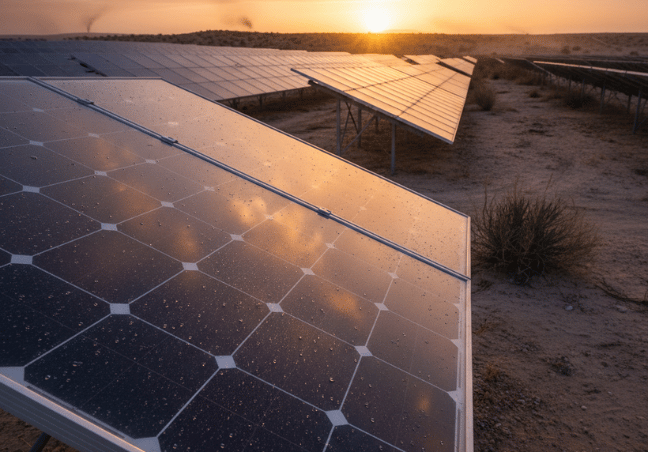- Renewables Rising
- Posts
- Low prices drive biggest year for solar imports
Low prices drive biggest year for solar imports
Dear subscriber,
Falling solar prices is something we’ve got used to… but the technology appears close to its price floor now, with only small reductions expected in coming years. The next phase of growth will depend more on the strength of markets and policies.
– Sammy Jamar, Editor
African countries imported a record 14.8 GW of solar panels in the ten months to October, 2.1 GW more than the total imported in 2024, according to the latest data from think tank Ember. Despite the higher volumes, buyers spent $45 million less overall. This was driven by a 19% fall in prices between 2024 and 2025, with 2025 prices dropping to $0.094/watt. |
The drop has been mainly driven by Chinese government subsidies and improving technology. Since 2018, prices have fallen by more than 73%.
Lower costs have encouraged growing adoption in Africa, with 24 countries importing more than 100 MW, four more than in the whole of 2024. Algeria joined South Africa, Nigeria and Egypt in reaching gigawatt-scale imports.
Our take: The price-driven surge in solar uptake has peaked, and future growth will hinge on each country’s energy needs and policy strength… Read more (2 min)
Water and energy equipment company Davis & Shirtliff has deployed a containerised hybrid solar system, combining a 50 kW inverter with a 70 kWh battery, in Kenya. The modular, pre-assembled format enables rapid deployment in rugged terrain, an improvement on traditional solar micro-grids that require extensive site preparation and technical installation. |
Many remote communities are cut off from national power grids. Modular and hybrid solar solutions can be an alternative to slow and costly grid expansion.
Davis & Shirtliff follows in the footsteps of SANY’s All-in-One Mobile PV system in West Africa, which combines an inverter, battery, and PV in a mobile unit.
Our take: Tech innovation is steering the energy transition in directions the formal grid can’t keep up with.… Read more (2 min)
For too long, energy success has been measured by access rates. That era is ending. The next frontier is to measure economic productivity per kilowatt, writes Opiyo Wandayi, Kenya’s Cabinet Secretary for Energy and Petroleum. The government, he says, plans a new energy architecture that links power generation directly to industry. |
“Kenya’s energy system seeks to reward productivity, not merely consumption. Our vision is to transition to a smart pricing model that encourages industrial performance, rewards efficiency, and empowers communities to produce and trade energy locally,” he writes.
Kenya has lifted its moratorium on power purchase agreements and is now negotiating with at least 54 energy developers on new projects totalling 1,112 MW.
Read the full article here… Read time (3 min)

Empower New Energy signs deals in Nigeria with Jendol Superstores and Juddy-Bolema (Source: Empower New Energy)
Events
🗓️ Join peers at the Renewable Energy Forum Africa (REFA) 2025 (Dec 3)
🗓️ Attend the Women in Renewable Energy Conference (Dec 9)
🗓️ Participate in a session exploring blended finance for green projects (Dec 10)
Jobs
👩🏻💻 Apply to Scatec Solar’s Customer Acquisition Manager role (South Africa)
👨🏻💻 Become Husk Power Systems’ Employee Experience Manager (Nigeria)
🦺 Sun King seeks an After-Sales Manager (Kenya)
Various
🌊 Malawi opens bidding for a new hydropower project
💰 Electricity export revenues projected to hit N1.49tn for Nigeria
☀️ IDC seeks consultants for a 100MW solar PV feasibility study in South Africa
⚡ Ethiopian Electric Utility partners with Wingu Africa to boost digital infrastructure
Seen on LinkedIn
Wavinya Makai, Book Author of Capital Violence, says, “For decades, the narrative of Africa's development has been funded from the outside: Foreign Direct Investment, external debt, and international aid. While important, this outward gaze has overlooked the most powerful source of capital; one that is currently flowing in the wrong direction.”


